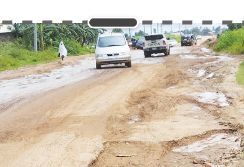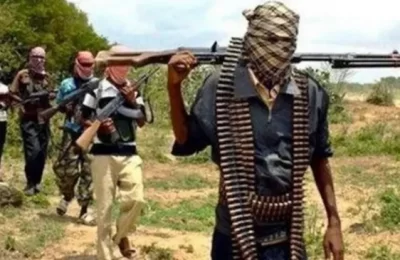The Tragedy of Keffi–Nasarawa–Toto Road.
By Muhammed Abdullahi
For anyone travelling between the North and the South-East through the North-Central, the Keffi–Nasarawa–Toto road is not just a route—it is a lifeline. Farmers use it to bring farm produce to market, traders depend on it for supply chains, civil servants commute on it daily, and families take it to connect across regions. Yet, instead of being a symbol of connectivity, it has become a symbol of neglect, frustration, and unnecessary deaths.
The road, like many in Nigeria’s heartland, is overwhelmed by traffic and undermined by decay. Potholes deep enough to swallow tyres litter its length. Broken drainage channels flood the shoulders at the slightest rain. Articulated trucks and heavy-duty vehicles crawl along, clogging the single carriageway. Motorists trying to avoid bad spots often veer into oncoming traffic, creating head-on collisions. For passengers, every journey feels like a gamble with fate.
The numbers that tell the story
The Federal Road Safety Corps (FRSC) has consistently listed Nasarawa State among states with the highest incidence of road crashes. In just three months of late 2023, the state recorded 212 road crashes, 32 deaths, and 555 injuries. Nationally, Nigeria lost nearly 3,000 lives to road crashes in the first half of 2025 alone. Many of these tragedies occur along the North-Central corridors like Keffi–Nasarawa–Toto. These figures reveal that what many dismiss as “just a bad road” is in reality a public health crisis.
Democracy’s broken promise
Nigeria’s return to democracy in 1999 raised hopes that infrastructure would improve, lives would be safer, and economic opportunities would spread. But today, citizens plying the Keffi–Nasarawa–Toto road ask: Where are the dividends of democracy?
Instead of relief, commuters face higher transport fares following the removal of fuel subsidy. For rural communities like Toto, where roads are the only link to markets, the rising cost of transport has turned food prices into a daily burden. Traders report spending more on repairs for broken-down vehicles than on actual goods. Drivers complain of being trapped between bad roads and expensive fuel, while passengers count the risks of travelling at all.
Citizens’ voices
“This road is our only hope, but it is killing us slowly. Every day, we see accidents, every week we bury someone,” says Ibrahim, a commercial driver who plies the Keffi–Toto route.
“My farm produce rots before it reaches the market because vehicles break down halfway. Sometimes, buyers refuse to come here because of the road,” laments Aisha, a farmer in Toto.
These voices capture the reality: it is not just about asphalt, it is about lives, livelihoods, and dignity.
Government inaction and misplaced priorities
Successive governments—federal and state—have promised to rehabilitate or dualise the Keffi–Nasarawa–Toto axis. But promises rarely translate into action. Contracts are announced, flag-offs are celebrated, yet citizens return to the same craters and the same grief. The lack of continuity in governance, poor supervision, and corruption have turned what should be a straightforward project into an endless cycle of rhetoric.
Ironically, billions of naira are allocated each year to road construction, yet this crucial artery remains one of the most neglected. Citizens are left wondering if their safety and survival are less important than political ribbon-cuttings elsewhere.
What must be done?
The Keffi–Nasarawa–Toto road requires urgent intervention—not patchwork repairs but full rehabilitation and expansion. Drainage systems must be rebuilt, potholes eliminated, and the corridor expanded into a proper dual carriageway. Heavy vehicles must be regulated with weighbridges to prevent further damage. Beyond roadwork, government should integrate alternative transport such as rail connections to reduce pressure on highways.
Maintenance must also become policy, not an afterthought. Waiting for roads to collapse before intervening only multiplies the costs in money and lives. The people of Nasarawa and the wider North-Central deserve the same safety and infrastructure as any citizen elsewhere in Nigeria.
Conclusion
The Keffi–Nasarawa–Toto road is more than an asphalt strip; it is a test of Nigeria’s governance and democracy. If the government cannot ensure that citizens travel safely within their own country, then the promise of democracy rings hollow. Every pothole on this road is a reminder of neglect, and every crash is an indictment of failed leadership.
Until leaders act decisively, the question will remain: is this road a dividend of democracy, or a death trap sanctioned by silence?
Muhammed Abdullahi writes from Nasarawa, Nasarawa state.




